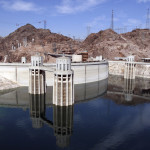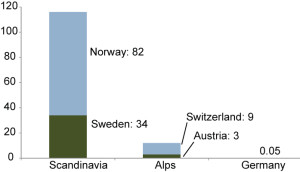Implementation of the Energiewende, the German energy transition, has been discussed intensively.
It is expected that Germany will be unable to use up the 38 TWh of electricity that it will be generating from renewable energy sources by the year 2050. The resulting excess capacity could therefore reach up to 60 GW within hours.

Interconnectors to other countries with greater hydro storage potential, namely in the Alpine region and in Scandinavia, are being considered as a solution for energy storage for Germany.
But the important question is whether and to what extent hydropower storage installations outside Germany could help absorb excess electricity from renewables and provide back-up electricity to Germany. How can their storage potential be used in an effective and economically viable manner?
In the end of last year, Weltenergierat, the WEC German committee, published a report in association with Prognos, the consulting firm, on “The significance of international hydropower storage for the energy transition”. The report focuses on Norway, Sweden, Switzerland and Austria due to the large hydro potential in those countries.
Norway and Sweden today have a working volume of 116 TWh in hydropower storage installations, which is about 2,300 times larger than that in Germany. The storage volume in Austria and Switzerland is much smaller, at about 12 TWh combined . Norway and Sweden are capable of providing the largest storage capacities in the long term. In the short and medium term, however, the storage capacities of the Alpine region can contribute to the integration of renewable energies, especially from photovoltaic plants in the south of Germany.
The most energy-efficient type of storage is the so-called ‘indirect storage’: this means that surplus electricity from Germany is consumed directly in Scandinavia, thus sparing the local hydroelectric storage capacity. At other times, electricity generated in the Scandinavian hydroelectric storage plants could then be exported elsewhere.
With the upcoming changes in the design of the European electricity market, current analyses of the economic efficiency of new interconnectors to Scandinavia are somewhat uncertain. Price differences between Scandinavia and continental Europe are likely to gradually decline with the coupling of the electricity markets and this is also likely to dampen economic efficiency. In addition, interconnectors to Germany are under competitive pressure, with every new potential connection to Scandinavia facing competition against connections to other countries such as the Netherlands or the UK. The WEC Germany report estimates that the construction of new interconnectors between Germany and Scandinavia, including currently planned projects, could total 7 to 12 GW by 2050 . This could accommodate the transmission and consumption of 26% to 52% of Germany’s electricity surplus.
“The energy transition in Germany is a ‘project of the century’. The study aims to contribute to the debate on how to implement this transition, which is of great importance to Germany” says Jürgen Stotz, Chairman of Weltenergierat.
The report also represents an excellent example of how WEC members have collaborated at the regional level. It has been realised with the support of WEC member committees in Switzerland, Austria and Sweden plus the involvement of other experts from those countries.
The full report, in German, can be downloaded from the Weltenergierat website: http://www.worldenergy.org/documents/prognos_study_international_storage_121023_en_final.pdf






_-80_result_688_387_s_c1_c_c.jpg)


